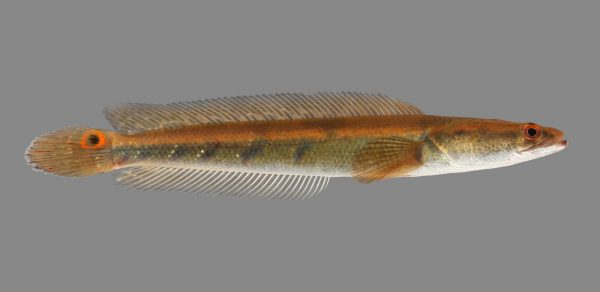Scientists from the University of Florida's Museum of Natural History have found a new invasive species, the Goldline snakehead, in a freshwater pond in Manatee County, Florida. This is the first time this frog-eating fish that breathes air has been found in the Gulf Coast region, raising concerns about the potential harm it could cause.
Snakeheads are originally from Asia and Africa, and it is thought that they were brought to America through the release of fish from aquariums and fish markets. The Goldline snakehead is a predatory fish with a large mouth that can survive outside of water for up to four days and can travel short distances on land.
This invasive species poses a threat to native ecosystems and can reproduce in large numbers, as it can carry up to 50,000 eggs. This makes them a real concern for the environment.
Aggressive Invader
The Goldline snakehead is particularly aggressive towards other species, which can lead to significant declines in native fish populations. This recently discovered population in Manatee County is not the only one found in Florida, as another population has existed in Broward County since 2000. Since their introduction, these invasive fish have spread to waterways in other areas such as Miami-Dade and Palm Beach.
The discovery of this new population of Goldline snakehead in Manatee County was unexpected, given the distance between it and established populations, as reported in a paper published in the journal Aquatic Invasions. Scientists suspect that human interference is the likely cause for the presence of this invasive species in this new location. Following the discovery, officials from the Florida Fish and Wildlife Conservation Commission removed almost 400 of the fish from the pond to prevent further damage to the ecosystem, as reported by the Florida Museum.
Newsweek reported that the scientists also observed a behavior in this population of snakeheads that was particularly concerning. In 2020, they observed these fish emerging onto the riverbank, attacking and feeding on green tree frogs, before returning to the water. This behavior is an example of how snakeheads can disrupt the ecosystem.

Goldline snakeheads can breathe in both water and air and were observed hunting frogs on land
ALSO READ: Freshwater Fish Feared Extinct: Here's How to Safeguard Its Population
Snakehead Fish in Nature
According to Robert Robins, the Ichthyology Collection Manager at the Florida Museum of Natural History and co-author of the study, non-indigenous species that can reproduce have the potential to harm the environment they are introduced to. Although most do not become invasive, some do. So far, there is no evidence that the snakeheads have spread beyond this pond, but further research is necessary to ensure this.
The Goldline snakehead is a type of snakehead fish characterized by its elongated body that is cylindrical at the front and tapered at the back, and a flattened head. It has a dorsolateral eye position and a bright orange ocellus on the upper base of its caudal fin. The fins of the fish are pale with a reddish tint. This species is typically found in canals, pools, swamps, and lakes with little or no current, often in beds of submerged aquatic vegetation.
The Bowfin fish is similar to the Goldline snakehead as they both have a large bony throat plate and a long, cylindrical body. They are found in standing water such as swamps, sloughs, lakes, and the backwaters of lowland streams. Bowfin fish are usually seen near woody debris as well as vegetation and are fellows of the Bowfin family.
RELATED ARTICLE: Snakehead Fish Invasion: Reasons Why Authorities Want Them Dead
Check out more news and information on Invasive Species in Science Times.














